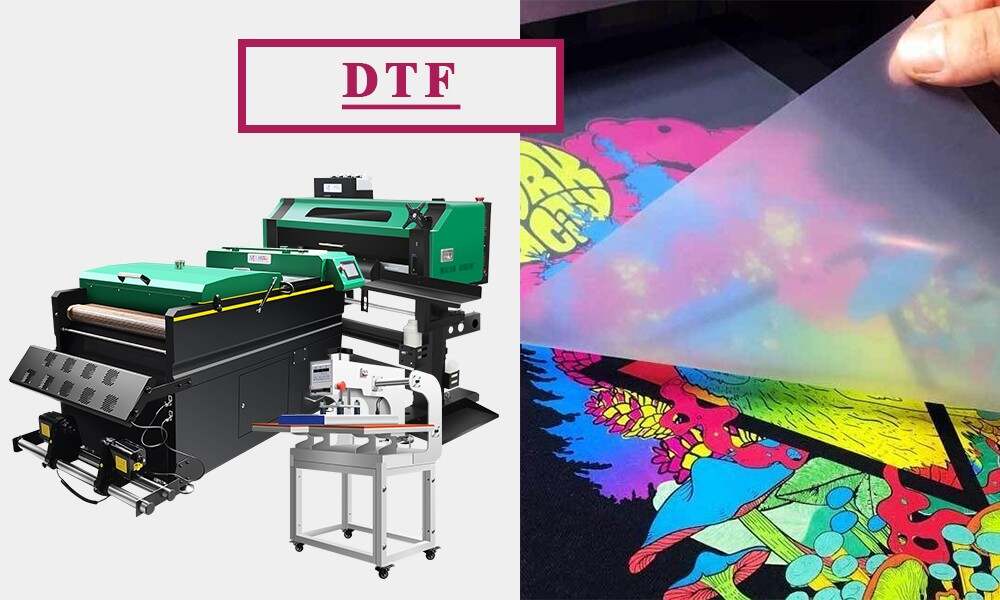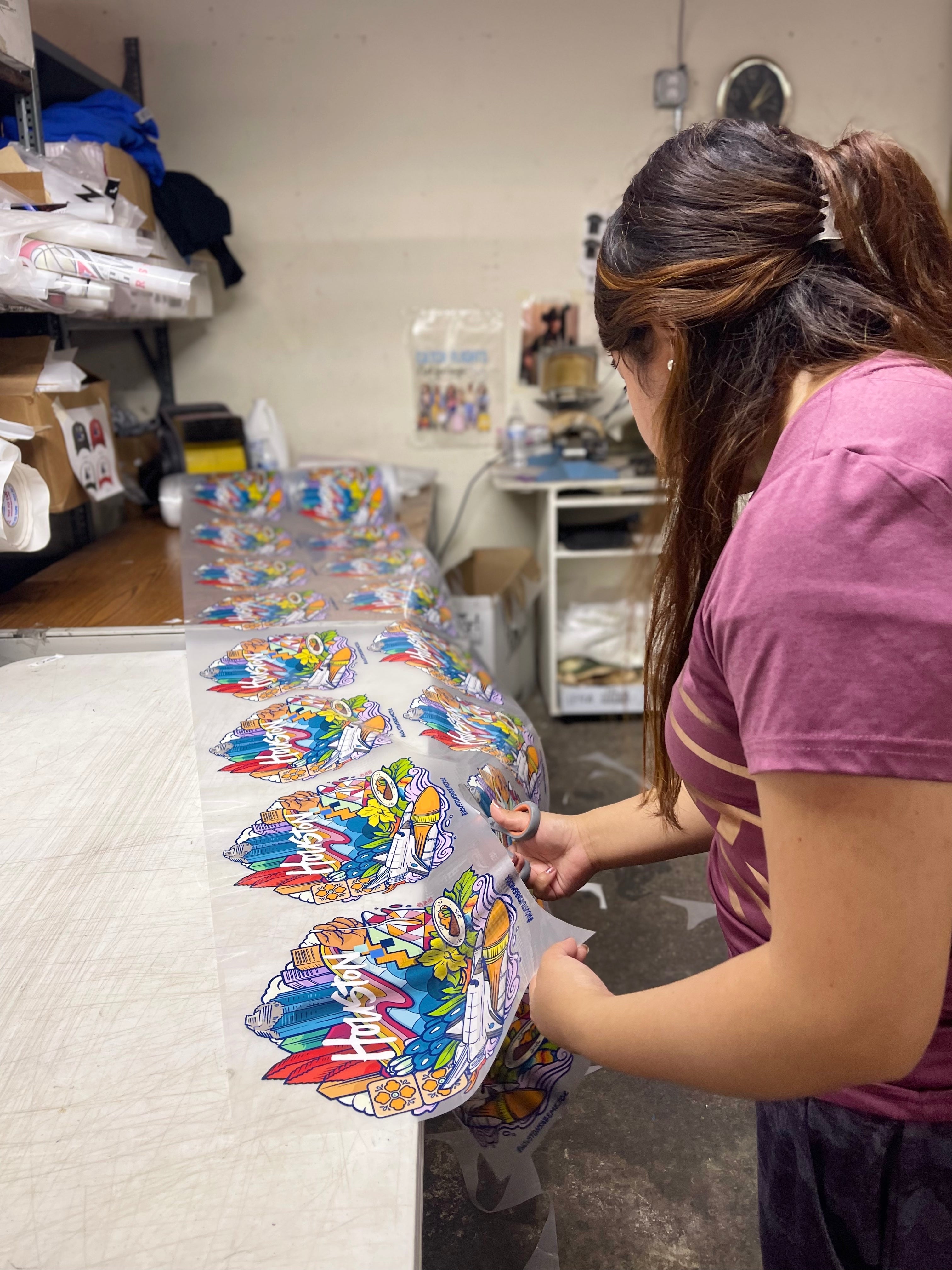The Ultimate DTF Printing Overview: Methods, Materials, and Applications
The Ultimate DTF Printing Overview: Methods, Materials, and Applications
Blog Article
Grasping DTF Printing: Advice for Achieving Vibrant and Long Lasting Prints
Worldwide of fabric printing, attaining vibrant and sturdy prints is a sought after ability that can boost the top quality of your output. Understanding DTF (Straight to Film) printing calls for a blend of technical expertise, precision, and focus to information. From choosing the ideal materials to tweak print settings and refining post-printing finishing methods, there are many elements that can influence the result of your prints. Comprehending exactly how to navigate these ins and outs can make all the difference in between a mediocre result and an absolutely exceptional one.

DTF Printing Fundamentals
For those brand-new to the globe of textile printing, recognizing the basics of DTF printing is important to mastering this innovative technique. Straight to Film (DTF) printing is a modern-day technique that entails transferring styles from an unique movie onto different fabrics using a heat press. Unlike conventional techniques like screen printing, DTF offers advantages such as vibrant shades, intricate outlining, and the ability to publish on diverse materials like cotton, polyester, and blends.
The procedure begins by publishing the design on a special DTF movie making use of a compatible printer with CMYK or CMYKW ink sets. Once the layout is published, it is after that healed with a warmth press to produce a resilient and sturdy print. DTF printing is recognized for its capacity to recreate complicated layouts with high accuracy and shade accuracy, making it a prominent choice for services looking to develop custom garments, marketing things, and much more.
Choosing the Right Materials

The adhesive powder acts as a bonding representative between the published layout and the textile, so it has to have solid bond residential properties to ensure a durable and sturdy transfer. By meticulously choosing the right materials for DTF printing, printers can boost the top quality, vibrancy, and long life of their prints.
Maximizing Print Setups
When aiming to achieve the ideal results in DTF printing, meticulous focus to optimizing print setups is vital for making sure specific and top quality transfers onto textiles. One crucial aspect to take into consideration when maximizing print settings is the resolution.
An additional vital setup to maximize is the print rate. Discovering the right balance between rate and top quality is vital. While boosting the rate can improve effectiveness, it may endanger the last print's clarity and color saturation. Exploring with various speeds and observing the outcomes can aid establish the optimum setting for every print job - DTF Printing.
Moreover, make improvements shade accounts and guaranteeing appropriate shade administration are vital for accomplishing accurate and constant shades across various prints. By adjusting color setups and accounts, printers can minimize shade variances and create uniform results, improving the overall print top quality and customer satisfaction.
Preparing Art Work for DTF Printing
Transform the artwork to CMYK shade setting to make certain that the colors equate properly from screen to print. Bear in mind to mirror the last layout before printing to ensure that it transfers properly onto the garment. By adhering to these actions and paying close focus to the information, you can prepare artwork that is enhanced for sturdy and basics vibrant DTF prints.
Post-Printing Finishing Techniques
Implementing efficient post-printing ending up methods is essential to enhancing the toughness and aesthetic allure of DTF prints on fabrics. When the printing procedure is full, using warmth to the printed style is important (DTF Printing). Warm not just help in curing the ink but likewise makes sure that the shades are lively and long-lasting. A warmth press machine established at the recommended temperature level and stress settings can help attain optimum results.
After heat pressing, removing the PET movie thoroughly is a critical action. This process needs to be done gradually and gradually to prevent any type of damages to the print. Once the movie is eliminated, the print might call for added treating time to better establish the ink into the material. This action helps improve the washability and durability of the print, guaranteeing it can stand up to multiple laundry cycles without fading or breaking.
Furthermore, trimming any excess film around the style can offer the last print a tidy and specialist look. Making the effort to correctly end up DTF prints post-printing can substantially impact the general top quality and long life of the fabric layout.

Final Thought
In final thought, understanding DTF printing calls for a complete understanding of the fundamentals, picking ideal materials, optimizing print settings, preparing art work efficiently, and using post-printing completing methods. By complying with these ideas and methods, one can accomplish sturdy and dynamic prints that fulfill their wanted quality standards. Consistent practice and interest to detail are essential in achieving effective end results in DTF printing.
From choosing the best materials to adjust print setups and refining post-printing completing methods, there are many factors that can influence find out here now the result of your prints. Unlike traditional techniques like screen printing, DTF offers benefits such as vivid shades, intricate outlining, and the ability to publish on diverse materials like cotton, polyester, and blends.
As soon as the design is printed, it is then cured with a heat press to create a resilient and resilient print.When aiming to accomplish the best results in DTF printing, meticulous attention to optimizing print settings is important for ensuring precise and high-quality transfers onto textiles.In final thought, understanding DTF printing requires an extensive understanding of the learn this here now fundamentals, choosing suitable materials, enhancing print setups, preparing artwork efficiently, and using post-printing ending up techniques.
Report this page